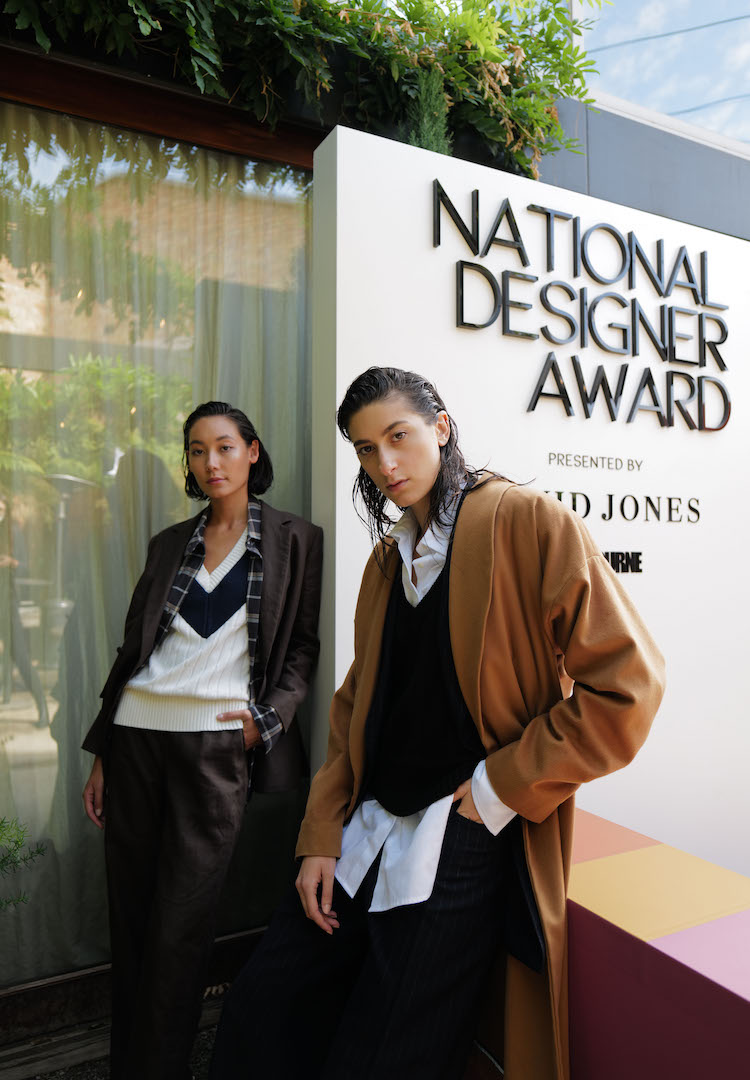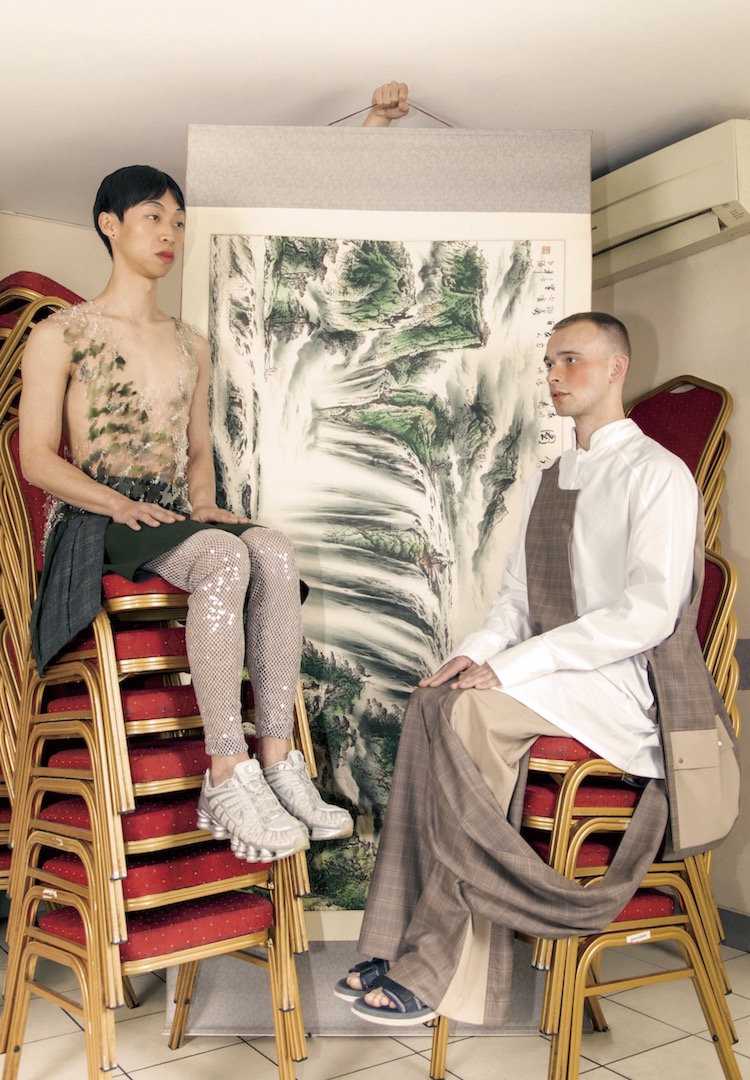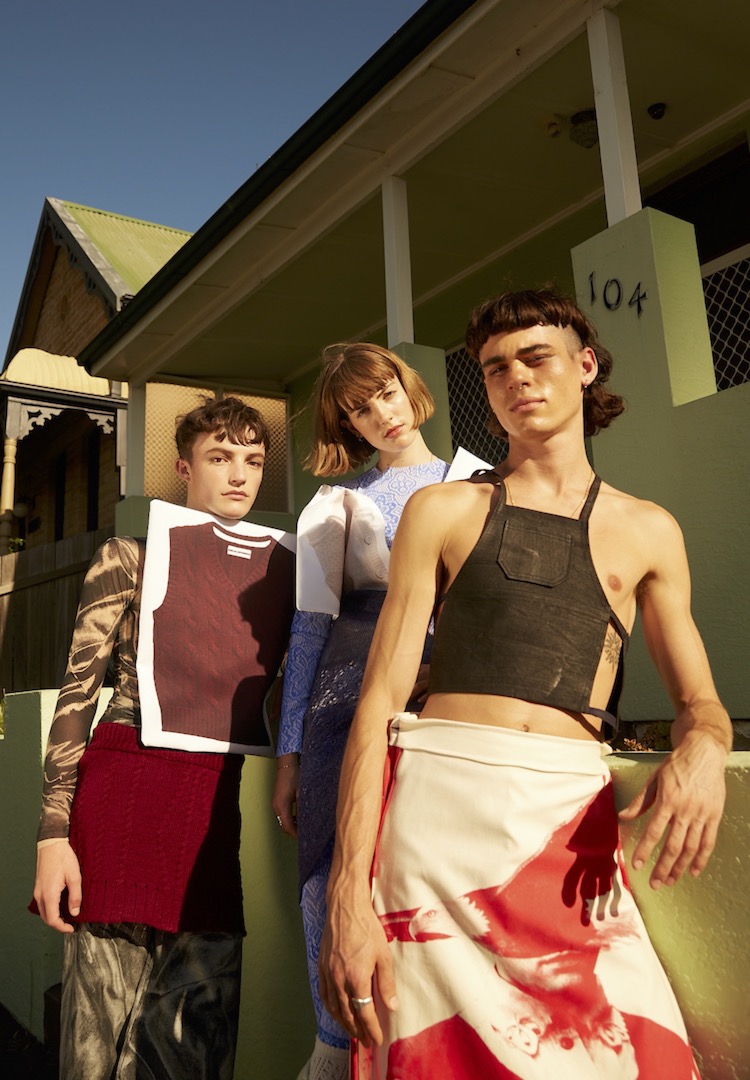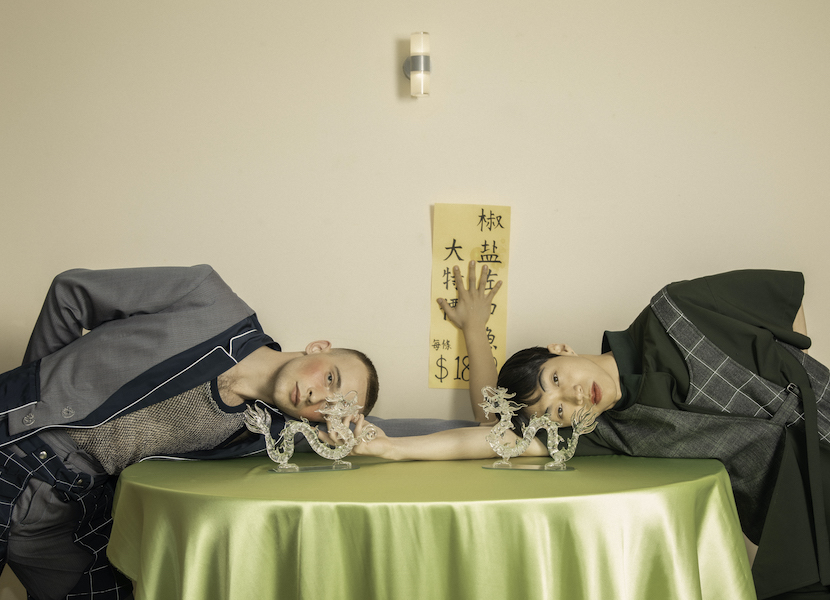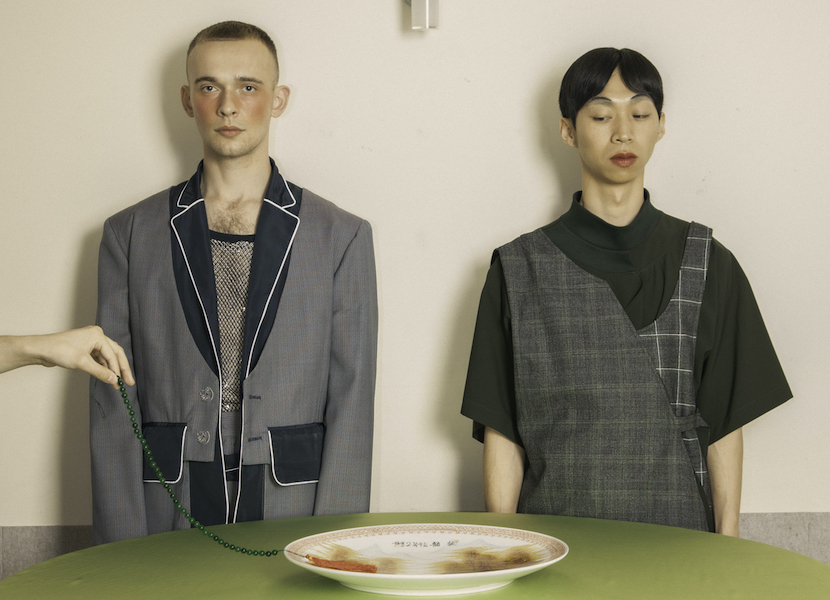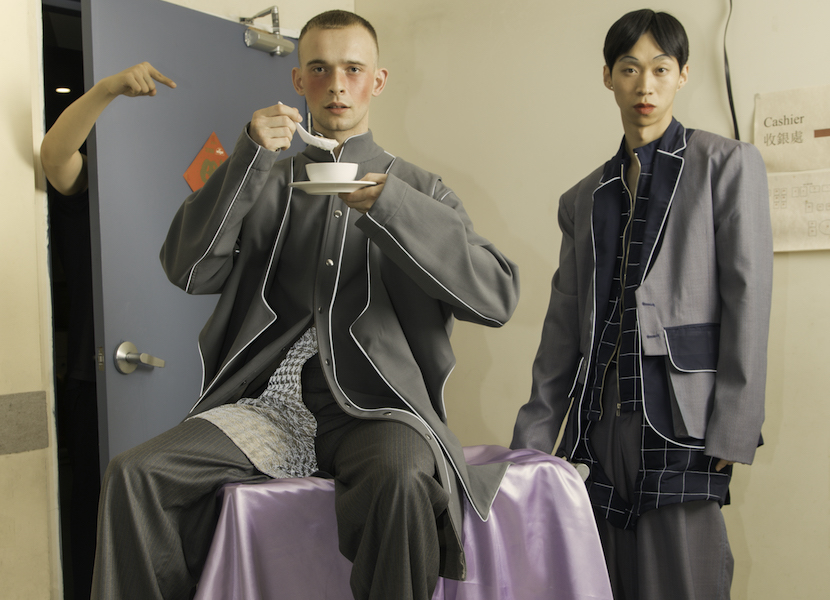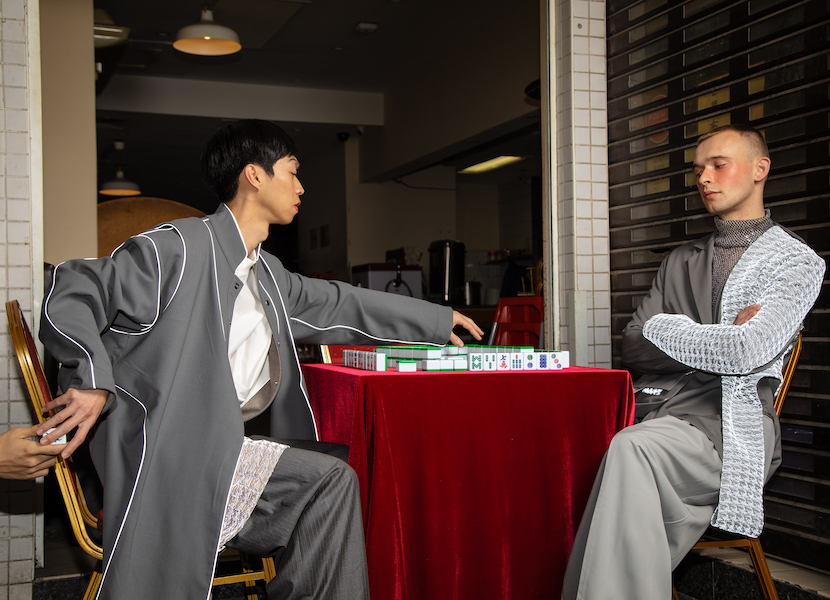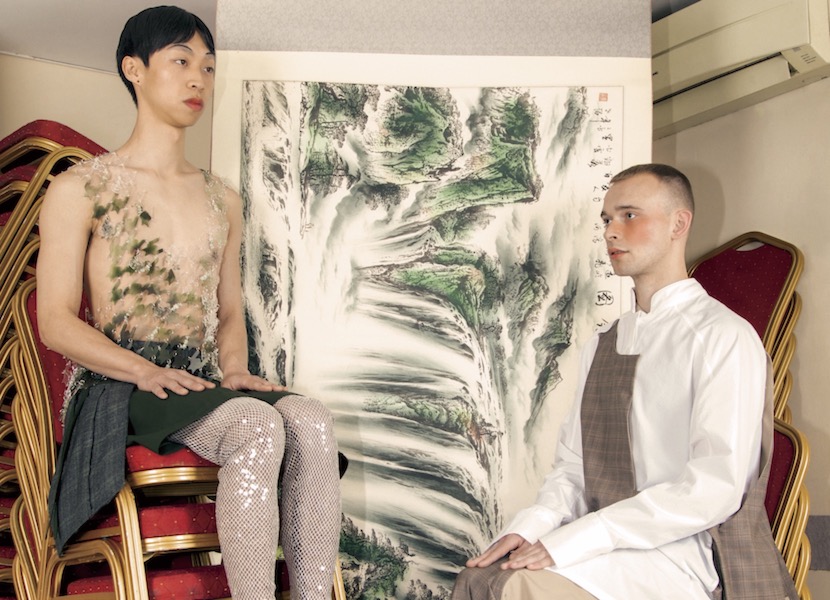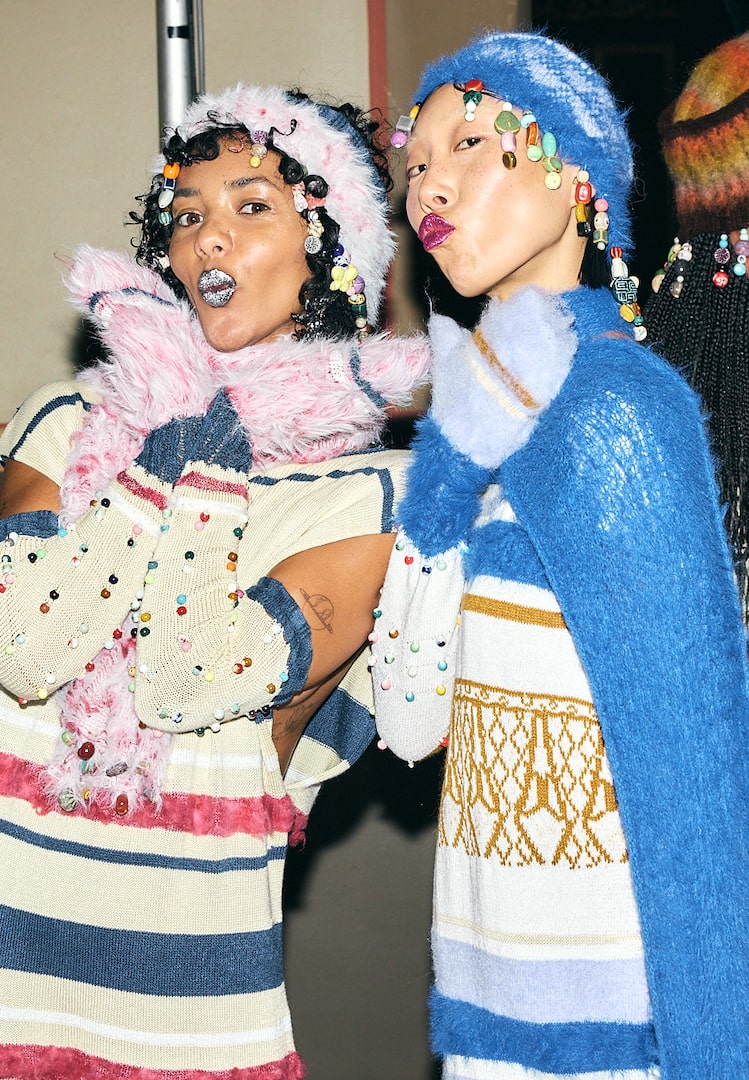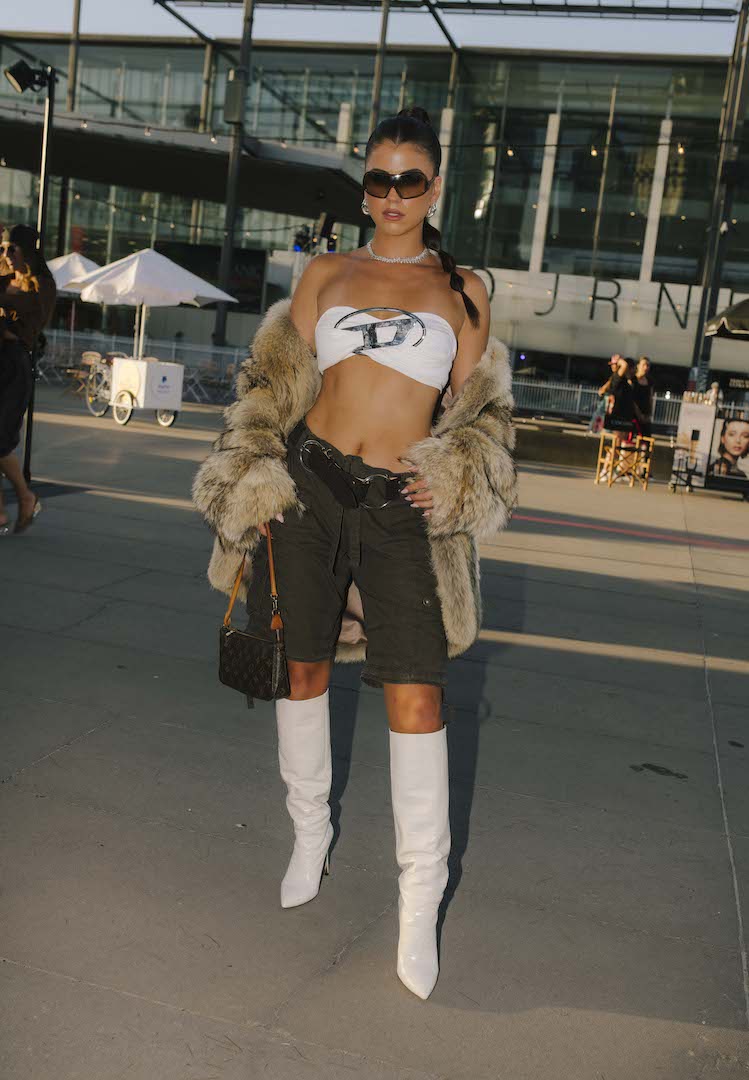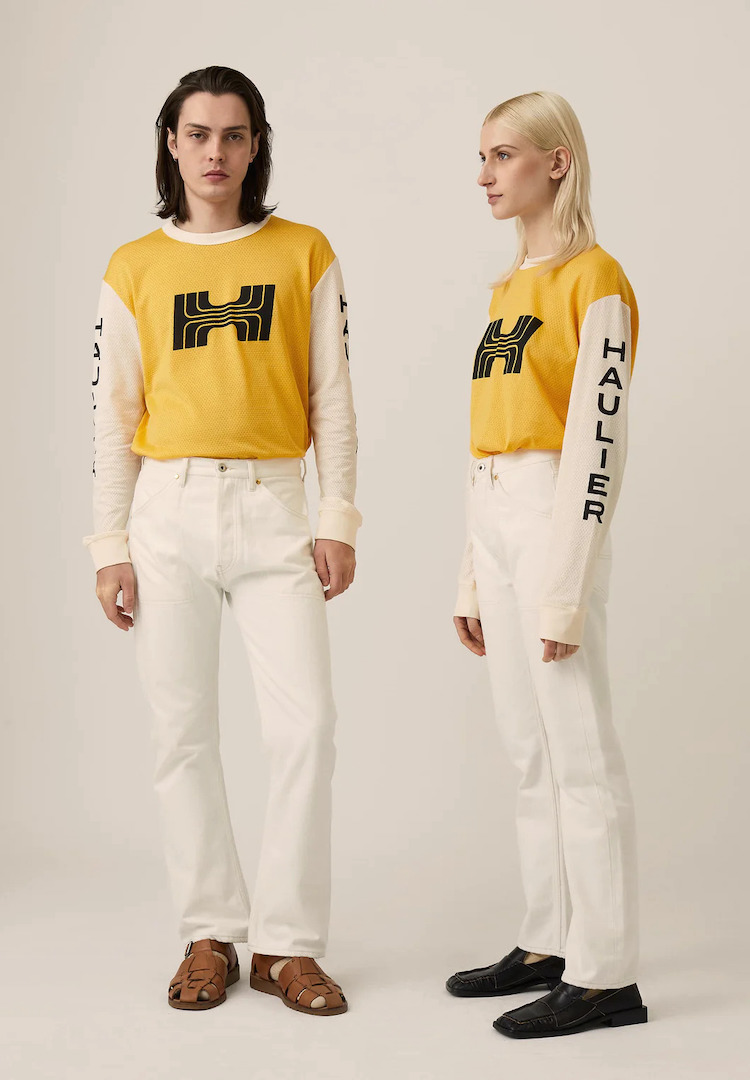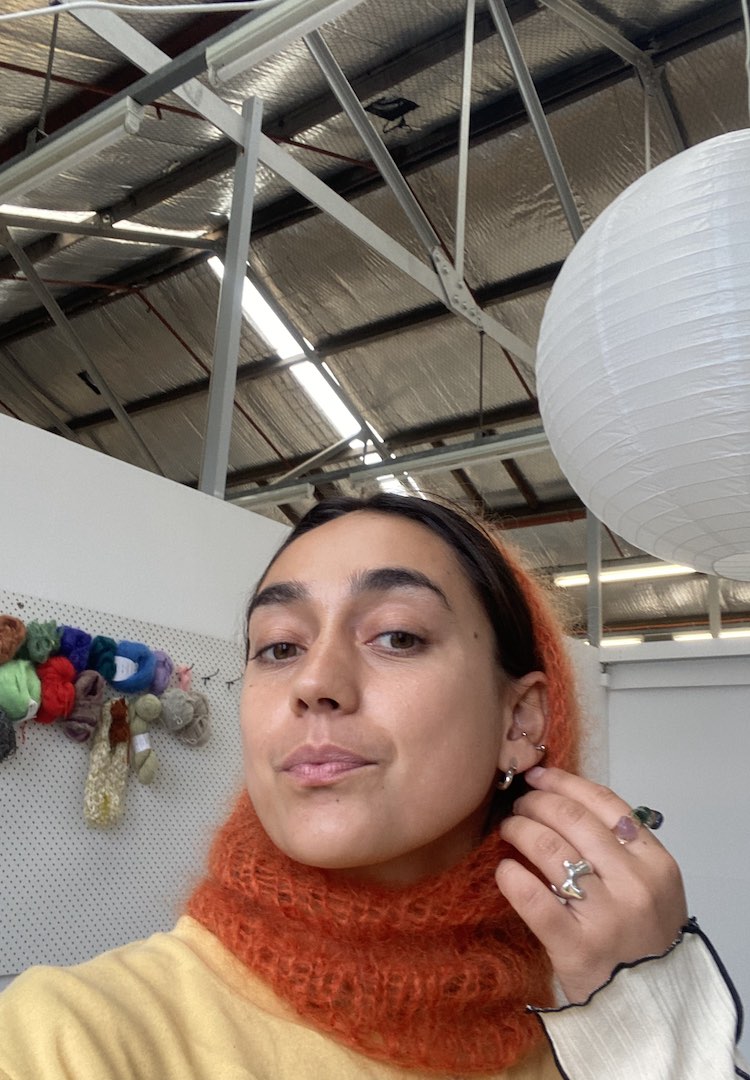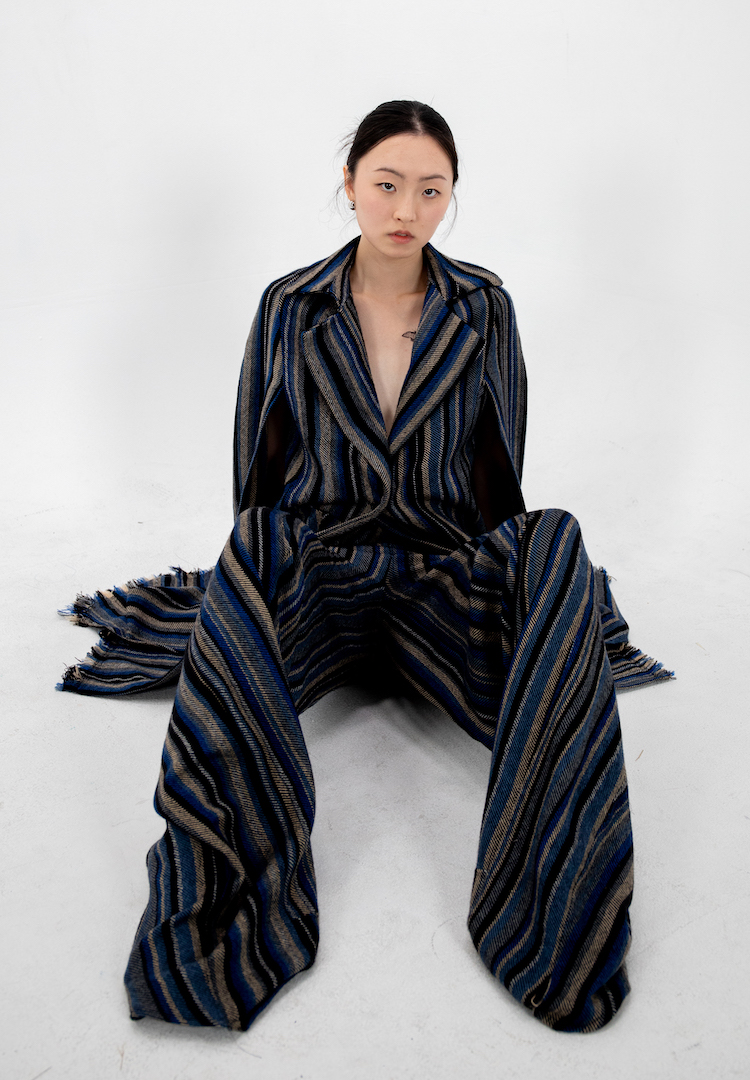Xizhu Wu’s graduate collection is a bicultural interpretation of avant-garde minimalism
Photography by Jackie Si
Words by Sarah Noonan
“I have an immigrant background, and when I was younger I went through a bit of an identity crisis. I was consistently confused by identifying if I’m Australian or Chinese.”
Xizhu Wu’s is one of the finalists for the Melbourne Fashion Festival National Graduate Showcase, presenting her graduate collection Shuãng.
Xizhu’s collection draws inspiration from her own upbringing and the struggles she’s faced balancing her connection to two cultures. Her perspective as a designer is all about merging new and old design techniques across both traditional eastern and western practices.
Looking to procrastinate in a productive way? Subscribe here and we’ll send more great reads straight to your inbox.
Serving as a metaphor for unity in all aspects of life, Xizhu’s designs follow a sleek, minimalist avant-garde style, infused with reinvented, modernised production techniques to encourage a new wave of modern fashion design.
Here’s what Xizhu had to say about her designs, process and the struggles of compiling a graduate collection during the halting year of 2020.
Please introduce yourself to our readers.
I’m Xizhu, I just recently graduated from University of Technology Sydney (UTS). I’m taking a little break at the moment as my plans to go overseas were disrupted by COVID.
Tell us about your collection.
My collection started off with the idea of my heritage. I have an immigrant background, and when I was younger I went through a bit of an identity crisis. I was consistently confused by identifying if I’m Australian or Chinese.
In terms of designing, my cultural background always impacted me and the way I design. So basically, for this collection, I wanted to share the story of my bicultural upbringing and reflect on my emotions and experiences with that. In the end, I hoped to create something that would resonate with individuals who may share the same experience
View this post on Instagram
When did you know you wanted to get into fashion design?
I decided I wanted to pursue fashion design in high school. I knew nothing about fashion or design, but during a textiles course in high school, my textiles teacher showed me a book on Alexander McQueen and I was intrigued by his entire concept of design. It was quite confronting to understand how he expressed his ideas and his concept through fashion.
How do you describe your design style?
My designs are really minimal, there’s a big focus on details and the transformability of the garments. I tend to create designs that are really creative, but at the same time, practical. I try to create this practicality through tailoring. My transformative garments are often detachable, so you can remove the quilted layer and change the entire look of the garment. I think this presents greater versatility in the garments.
Are there any designers that inspired you in this sense?
Alexander McQueen was definitely the inception of creative inspiration for me back in high school. His creative direction sparked my interest in fashion design, but that has changed over the years. Now I draw more inspiration from Australian labels, particularly Song for the Mute. I love how they can tell stories through their collections and that is something I aim to do in my own designs.
What were the major points of inspiration for your graduate collection?
I drew inspiration from a lot of things. My bicultural background was definitely the most influential, taking notes from the things I grew up with and my surroundings as a child.
In terms of design, Fixxed Studios was a big inspiration for me. I interned and worked for Fixxed and really liked their concept of design. They elevate everyday garments by incorporating pattern making and taking unique inspiration from everyday practices that we wouldn’t usually consider.
Tell me about the influence of your bicultural background and how this is represented in the collection.
The bicultural influence is represented in my designs in the tailoring techniques, incorporating Eastern and Western garment practices. Traditionally, Chinese garments are flat and two-dimensional whereas Western garments are more tailor-informed, and I wanted to try and merge the two to represent this biculturality.
Can you explain the new and old design elements and how you manipulated these to create your collection?
This came into play in my study of dichotomies and back-to-back culturalism. My aim was to reinvent old textiles into something new. For me, quilting was a prominent fashion textile in China. It was something I would always associate with my time there. So I attempted to reinvent this in a way by incorporating other elements.
View this post on Instagram
What was the process of merging modern techniques with traditional fabrications like? Were there many implications in this production process?
Initially, I was stuck for ideas on how to best reflect my concept of biculturality, so I just tried experimenting with various textiles. I started off with houndstooth, a traditional Scottish textile, and reinvented this into a laser cutting and reflective knit piece. The knitting was a difficult process as the wool is very fragile and would break off every few rolls. So my process was altered in that I had to purposely break and rethread the wool to make the end product.
Tell us about the experience of putting together your graduate collection during the pandemic.
The pandemic did impact me and the people around me, so the mental strain was definitely hard to work past. Fortunately, our university was very supportive in that the coordinators arranged a separate area on campus for honours students so we had access to equipment and materials. We were still limited at times but I feel as though we were luckier than other institutions in this sense.
Your collection is very avant-garde minimalist, a reasonably fresh concept in the fashion scene. Do you plan to pursue this style of design experimentation?
I do hope to continue with this style in the future. I have been lucky to have gained some really influential work experience overseas in Shanghai. I interacted with labels there who are really at the forefront of the future of fashion. Their approach to design is really reflected in my personal creations and I hope to push these boundaries further in the years to come.
What’s next for you?
I’ve been thinking of completing my masters of fashion at Parsons School of Design in New York if travel options open up.
Ultimately I want to start my own brand. But before I do that, I want to get to know all aspects of the industry before diving in. So right now, I’m looking for work in fashion design, in buying, even in communications to enhance my knowledge on all facets. My graduate year really made me realise that the industry is not just about design and so it’s important for me to expand my abilities across these realms.
To follow more of Xizhu’s designs, click here.

